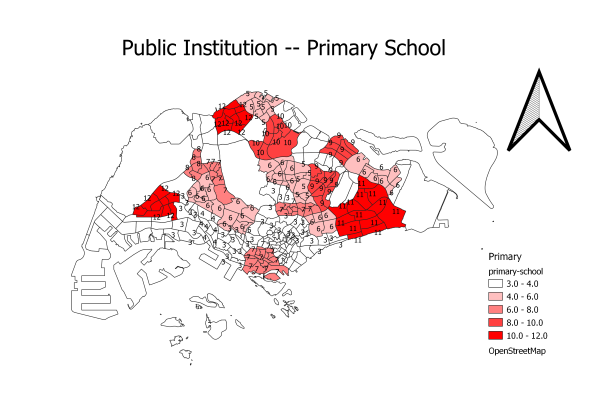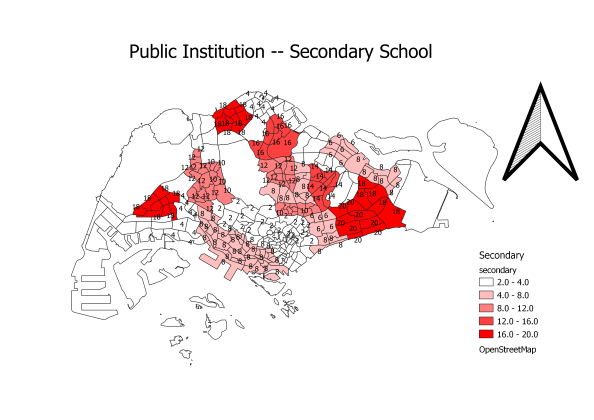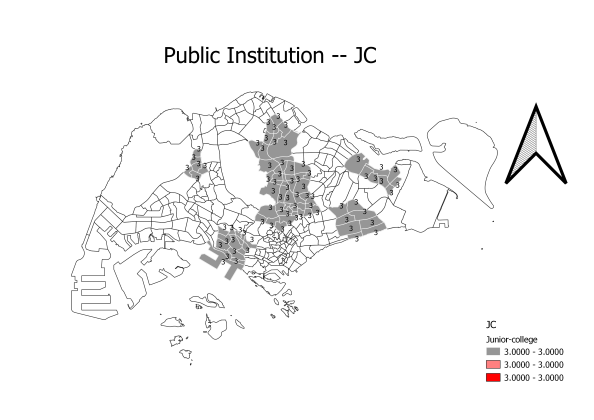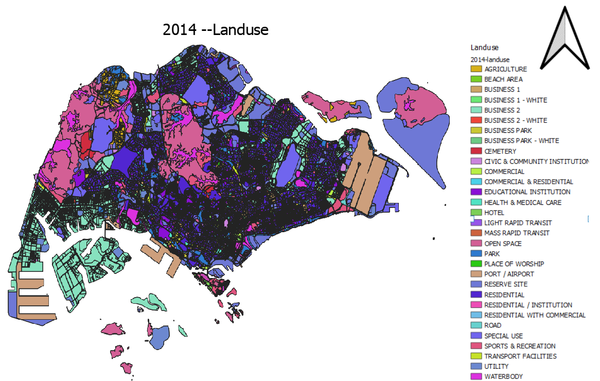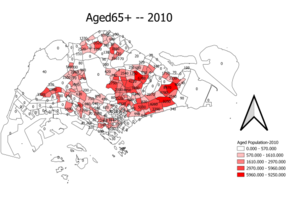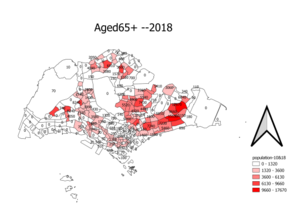SMT201 AY2019-20G1 EX2 Lin Xing
Contents
Part One
Primary School Allocation According to Subzones
In order to have more information about Singapore School, three different layers were made. Apparently, the further from central of Singapore, the more numbers of primary school are allocated.
Secondary School Allocation According to Subzones
As you can notice from graph above, allocation of Secondary school is pretty much similar to Primary School. In certain extent, Singapore has put in a lot of efforts to make sure basic education is available for all kids.
Secondary School Allocation According to Subzones
From the thematic map above, you can notice all JCs are located nearer to central area. Each subzones has same number of JCs.
Overall, we can tell that, Singapore has allocated schools well for its residents. Allocation of primary schools and secondary schools are able to fulfill kid's basic education. On top of that, adding up other types of schools, it will not be too crowded as seen from map.
Road Network System
In order to differentiate types of roads in Singapore, different colors were presented in the map. As different colors are noticeable, it could effectively help the readers knowing the roads without referring to legend too much.
2014 Land use
Different colors were used to categorize different purpose of land using. Even though there are too many category in the thematic map. We can still observe that:
Most part of land are: 1. Open Space 2. Residential 3. Business
